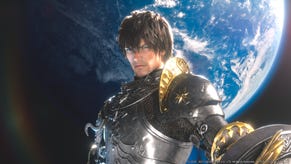Reader Reviews
This week: Titans of Steel, Ikaruga "and more".
Ikaruga (DC)
by Neil Smith

Well, lucky me. I managed to get a Japanese import version of Ikaruga for the Dreamcast released in 2002. From what I've read the GameCube version will essentially be the same as the Dreamcast one.
Anyway, I can safely say this is without a doubt the best vertical shooter I've ever played. Treasure's well-known high production values reach new superb levels on Ikaruga - from the robotic voice-overs to the slick anime-style menus to the game itself.
When you start the game you can choose to play on Easy, Normal or Hard mode. For now I've chosen to play on Normal mode.
What's interesting about Ikaruga is that the game uses the middle area on your television screen with black bars left and right of the playing area to help recreate the vertical monitor feel you would get on the arcade version of the game.
In the options menu you can flip the game on its side, but then I don't think doing the same thing to my TV would be a very good idea.
Anyone who has played Slipheed on PlayStation 2 will have a good idea of the graphical experience Ikaruga has to offer. The only thing is Ikaruga moves at a far more hectic pace than the more sedate Slipheed does.
The game has ever-changing 3D backgrounds while you stay on a 2D plane battling your enemies. It must be said though that the lighting effects are absolutely first rate and the game never slows down despite what looks like hundreds of bullets on the screen at a time.
The real genius of Ikaruga and what makes it different from hundreds of other previous vertical shooters comes to light once you start to play the game. You have three buttons: one, the standard shoot button, which you keep depressed all the time; two a power shot button you use once you have some power built up to unleash and three, the most important button, the colour change button.
The last button is what the game is all about. Let me explain why.
Your enemies attack you with two different kinds of blue or red coloured fire. So if a massive wave of red fire is heading your way you switch your ship to red fire as well.
When you are colour matched with the fire attacking you, your ship can absorb the enemy fire and help build up your power boost to unleash when you need it.
The only thing is your red fire only causes half the damage your blue fire would if you had used it. Of course, your enemies attack you in waves of alternating blue and red fire. So every instant you are playing you need to shoot back at your enemies to kill them, and at the same time remember to change your ship's colour so as not to be killed by the opposing fire.
What's more, it only takes one wrong-coloured shot to kill you. Thus if you make a single mistake - well, "It's game over, man". This living on a knife's edge just helps add to the adrenaline rush that is Ikaruga.
Let there be no mistake, Ikaruga is hard-core gaming taken to a new level. Only through constant playing and some form of Zen mind control will you master Ikaruga on the higher levels, and I'll readily admit that I'm not there yet. It will still take loads of practice for me to truly master the game.
A game such as Ikaruga could easily have been a letdown if the controls weren't 100 per cent right, but fortunately they're spot on. The game is superbly responsive and if you die, it's only because you made the mistake.
You can also play Ikaruga with a friend. Two ships tend to make the game a little bit easier. However, two ships can't pass through each other, so there may be times when you inadvertently cause the death of your buddy.
If it sounds like I like Ikaruga a lot then you are correct, dear reader. As a decades-long fan of the vertical shooter, I believe Ikaruga is one of the purest expressions yet of this somewhat neglected genre.
No score supplied.







